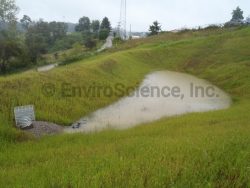Is your facility being inspected according to its NPDES permit requirements?
National Pollutant Discharge Elimination System (NPDES) permits regulate wastewater and stormwater discharges by limiting the quantities of pollutants to be discharged and imposing monitoring requirements and other conditions to protect public health and the aquatic environment. There are two types of NPDES permits: individual and general. An individual NPDES permit is unique to each facility. A general permit is one permit that covers facilities that have similar operations and types of discharges. Most industrial stormwater discharges are covered under general permits, as opposed to individual permits. However, states and the United States Environmental Protection Agency (USEPA) can issue individual permits to some facilities based on site-specific or industry-specific concerns.
NPDES permittees are subject to facility inspections by their regulating authority. In all but four states, the NPDES program is administrated by state agencies (e.g., Ohio Environmental Protection Agency [Ohio EPA]). Both USEPA and these delegated agencies have the authority to conduct unannounced inspections to determine compliance with the NPDES permit. Also, permit holders or their representatives are required to have qualified personnel conducting stormwater inspections to comply with their NPDES permit.
The Multi-Sector General Permit for Stormwater Discharges Associated with Industrial Activity (MSGP) requires three types of inspections at all permitted facilities:
- Routine facility inspections (at least quarterly)
- Quarterly visual assessments (quarterly)
- Comprehensive site inspections (annually)
Besides inspections, certain facilities are also required to collect stormwater samples for laboratory analyses and to perform water quality monitoring for stormwater discharges per their MSGP.
In addition to NPDES permit compliance related to inspections, sampling, and monitoring, most NPDES stormwater permits contain language referring to a “qualified person,” “qualified professional,” or “qualified personnel” who conduct the inspections, perform analytical sampling/monitoring, and develop and certify the required storm water pollution prevention plan (SWPPP). The three types of NPDES stormwater general permits (i.e., construction, industrial, and small regulated municipal separate storm sewer systems) each recognize the roles and responsibilities of a “qualified person.” According to Emily Remmel (2016), a Legal Editor at Business & Legal Resources, under these NPDES stormwater general permits, individuals assuming the role of a “qualified person” must possess three specific skills, including: [1]
- Knowledge of the principles and practices of erosion and sediment control and pollution prevention;
- Ability to assess conditions at the site that could impact stormwater quality; and
- Capacity to assess the effectiveness of any stormwater controls selected and installed, and the ability of such controls to meet the permit’s requirements.
The NPDES construction and industrial stormwater general permits require the actual SWPPP to be developed and certified by a “qualified person,” whereas “qualified personnel” must certify and maintain compliance with the permit. Several states require that sites be inspected by someone that the state certifies as a qualified inspector. One organization, EnviroCert International, Inc. (available at http://www.envirocertintl.org), offers two professional certification programs that would be useful for personnel who are developing and implementing SWPPPs and conducting stormwater inspections. These certification programs are titled: “Certified Professional in Erosion and Sediment Control (CPESC)” and “Certified Professional in Stormwater Quality (CPSWQ).”
EnviroScience has experts who meet the NPDES permit requirements for a “qualified person.” Professional engineers and scientists in the Compliance Services group at EnviroScience have over 125 years of combined experience in regulatory affairs. Compliance Services can develop regulatory compliance strategies and plans for clients, including services related to stormwater permitting, SWPPP development and training, design and implementation of Best Management Practices, site assessment/inspections, and field sampling/monitoring. In addition, several staff members have obtained the aforementioned CPESC professional certification. EnviroScience can provide clients with the necessary services to avoid common violations and ensure that SWPPP development and stormwater inspections are done by qualified persons with the required training, certifications, and experience. Call us at 800-940-4025 or read more about our services here.
References
[1] Remmel, Emily. (2016). Stormwater: Who is a ‘qualified’ person? Enviro.BLR.com. Retrieved January 31, 2018, from https://enviro.blr.com/environmental-news/water/stormwater-general/Stormwater-Who-is-a-qualified-person.
